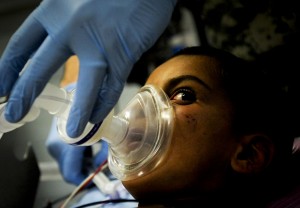In a paper published in Geophysical Research Letters, we quantify the influence of anaesthetic gases on global atmospheric radiative forcing. It turns out that inhalation anaesthetics are potent greenhouse gases, with 1 kg of emissions of desflurane (a commonly used anaesthetic) having the influence of around 2,500 kg of CO2. However, emissions of these gases are very low compared to CO2, so the influence on climate is still relatively small.
This paper is nicely summarised in an American Geophysical Union press release, and was picked up by the Daily Mail.

Credit: ISAF Headquarters Public Affairs Office/Wikimedia Commons
